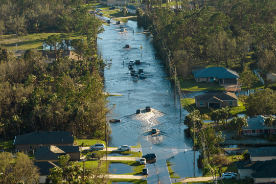Politics
Getting Assurance Ready Controls and evidence trails for sustainability data

As sustainability reporting becomes more standardized and subject to external review, organizations are under increasing pressure to make their disclosures assurance-ready. This means treating environmental, social, and governance (ESG) data with the same rigor as financial information, ensuring that every figure is supported by reliable controls and a clear evidence trail. The shift is being driven by new global frameworks such as the EU’s Corporate Sustainability Reporting Directive (CSRD) and the International Sustainability Standards Board (ISSB) standards, both of which require companies to demonstrate transparency, consistency, and accountability in their sustainability reporting.
Getting assurance-ready starts with strong internal controls. Companies need to assign clear ownership of ESG data across departments, whether that means operations tracking energy and emissions, HR monitoring workforce diversity, or finance validating carbon-related expenditures. Standardized collection methods are essential, so that figures such as greenhouse gas emissions, water usage, or supply chain impacts can be measured consistently over time. These controls must be tested regularly, much like financial audits, to confirm that they are working as intended. Increasingly, organizations are adopting automated digital systems to reduce errors, replacing the patchwork of manual spreadsheets that once defined ESG reporting.
At the heart of assurance readiness lies the evidence trail. Every reported number must be traceable to a clear source, whether it’s a utility bill, a supplier certification, or a transport log. Audit logs showing when data was entered or approved, version controls tracking changes in methodologies, and independent third-party verifications all contribute to building confidence in the final disclosures. An effective evidence trail ensures that sustainability reports are not simply claims but verifiable records backed by data.
For investors, regulators, and the public, reliable ESG disclosures are becoming non-negotiable. Assurance not only reduces the risk of “greenwashing” but also signals maturity in governance and transparency. Companies that can demonstrate trustworthy sustainability data are better positioned to attract investment, manage reputational risks, and comply with increasingly strict regulations.
Ultimately, preparing for assurance is not just about compliance—it is about cultural change. Organizations must embed sustainability into their overall strategy, governance, and risk management systems. In doing so, they move closer to a future where sustainability data carries the same credibility and weight as financial data. Those that establish strong controls and robust evidence trails today will stand at a competitive advantage tomorrow, ready to meet both regulatory requirements and rising stakeholder expectations.

Emily Johnson
Reporter
At least 20 people killed in Russian glide bomb attack on village in eastern Ukraine

Transition vs. Physical Risk A decision tree for which risk dominates by industry.

Getting Assurance Ready — Controls and evidence trails for sustainability data.
trending posts

TOP Categories
Google Web Reporters












3 comments
David Bowie
3 hours agoEmily Johnson Cee
2 dayes agoLuis Diaz
September 25, 2025